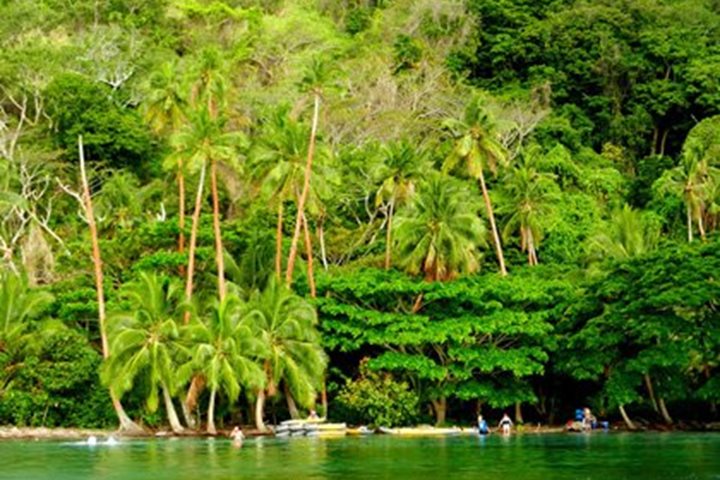Our first full expedition day on the National Geographic Orion in the Solomon Islands was rich in detail and stories of the past.
Starting with the present, being at sea frequently brings surprises and an early wakeup call brought our attention to a pod of pilot whales milling about ahead of the ship. We had some good views before continuing onto our morning’s destination, Owa Raha Island.
As people of an oral culture, the Melanesian people who live on this island have preserved traditions by passing along the stories of their ancestors with performances. Thus, each arriving Zodiac was greeted with an “attack,” as if protecting their island from potential marauders or spirits. We came ashore through floral decorations and gathered in the shade at the edge of a field. We listened, watched, and photographed the men making music by slapping the ends of pipes made of bamboo and PVC with remnants of old flip flops, while others played panpipes. Women danced in colorful attire adorned with flowers, plants, shells and dogteeth necklaces.
Much of the community gathered to watch. For the final dance, the locals drew in closer, clearly with a great anticipation of a favorite story about to be told. A line of women with palm leaf hats and palm skirts danced to celebrate the younger girls being given away in marriage. From the forest a group of men emerged, covered in mud. Local interpretations of this story say these men represent Polynesians coming to steal women away, or that they may be “spirits,” white people coming to take slaves. Either way, in today’s story, a second group of men from Owa Raha arrive whose skin is blackened with charcoal. They fight off the intruders, all to the delight, laughter, and shouts of the locals around us.
As the performance came to an end, we set out for various walks. Photo walkers meandered through the shoreline village, capturing images of daily life and enjoying photographing children playing in the crystal clear water. Hikers set off to visit the more traditional village of Nafinotoga, some continuing on to visit two Spirit Houses containing the skulls and bones of ancient chiefs of the Snake Clan and the Turtle Clan. Here, descendants keep these remains in shrines to remember their ancestors, and to pray for their protection and support. When we return home, our photos and memories will hold these stories of Owa Raha.
Back on board we had a leisurely afternoon at sea. After lunch, the first presentation was Jack Swenson’s “Photo Essentials” followed by a hands-on session with the photo team.
Following tea, James Bradley, author of “Flags of Our Fathers,” gave us an inspiring and memorable presentation discussing the stories behind the famous photograph of the US flag being raised on Iwo Jima on February 23, 1945. He spoke with great passion for the six young men who raised that flag, one of whom was his father. After his father died, James discovered how little was known about these heroic men and began his search to find and tell the stories of what happened on that day, well beyond the facts and figures of history.
We sailed on, continuing our transit to Vanuatu and likely, to many more stories ahead.






